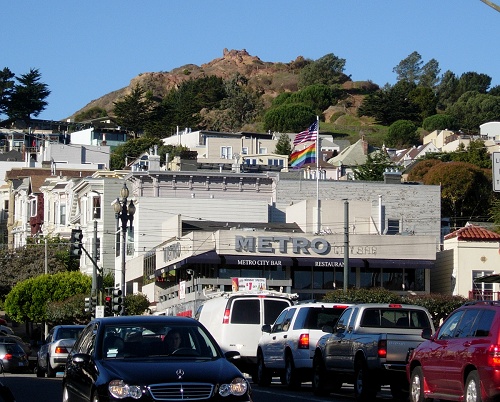Corona Heights is a hardworking hill that formerly yielded clay and chert. Years of quarrying have accentuated its rugged appearance and left splendid exposures of the bedrock. Along the way, if you keep an eye on appearances of old concrete (doesn't everybody?), you may spot the old chert aggregate around the neighborhood.
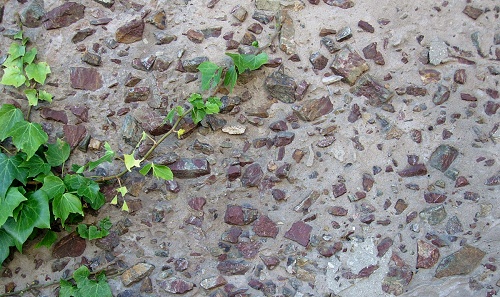
Corona Heights, like Bernal Heights to the southeast, is an island of resistant chert that is part of the dismembered Marin Headlands terrane. It houses a fine playground and the Randall Museum. It has a dedicated group doing habitat restoration. But we're here to see the slickenside.
A slickenside is the polished surface that is created along a fault as the rocks rub against each other. They are common in faulted rocks, but only in patches the size of your hand. (I showed you some in the Calera Limestone.) Larger ones are rarer. Quarrying at Corona Heights uncovered one the size of a big front yard, one of the world's largest exposures. To see it, start at Castro and 15th, go uphill on 15th and turn left on Beaver Street. Again, you can't miss it.
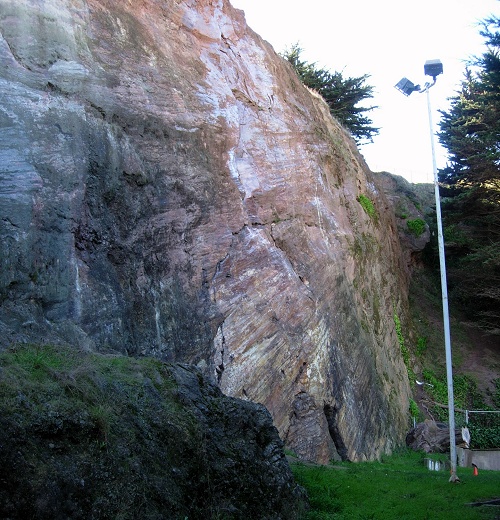
The site is also a playground, named for Sidney Peixotto. If you continue up 15th Street instead, you'll see the exposure this way.
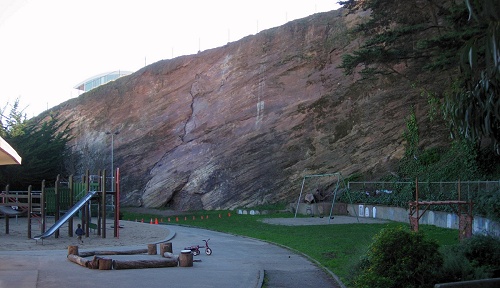
But the real joy of the thing comes at close hand, where you can feel the mirror-smooth surface that only a hard stone like chert can provide.
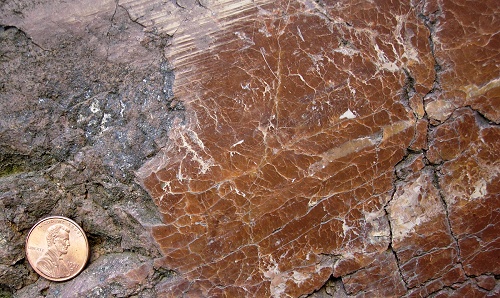
Surfaces like this are of scientific interest, although the data base is still scant. UC Santa Cruz researcher James Kirkpatrick has surveyed this site by lidar. He and others hope that close analysis can tell us more about how faults behave in detail. That's an advanced topic; the rest of us can collect the geocache at this spot.
Afterward is a good time to climb to the top of the hill and take in one of the city's best views. On a clear day you can see Mount Diablo (click for a 1000-pixel version).

37.7654 -122.4373
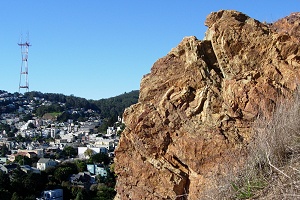 Sutro Tower and the gnarled chert of the Marin Headlandsterrane are parts of a splendid spectacle at San Francisco's Corona Heights. Photos by Andrew Alden.
Sutro Tower and the gnarled chert of the Marin Headlandsterrane are parts of a splendid spectacle at San Francisco's Corona Heights. Photos by Andrew Alden.